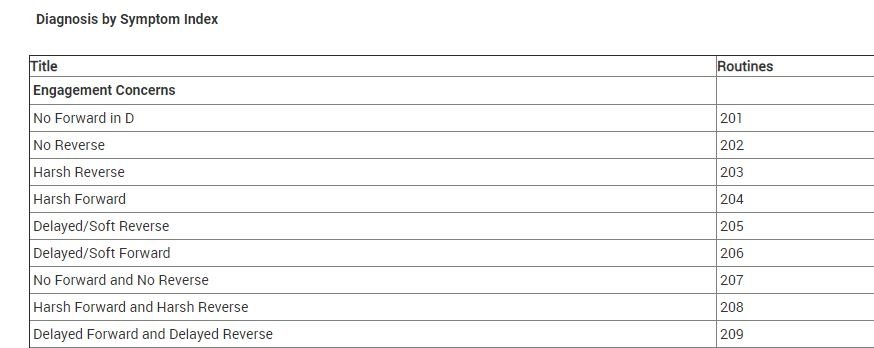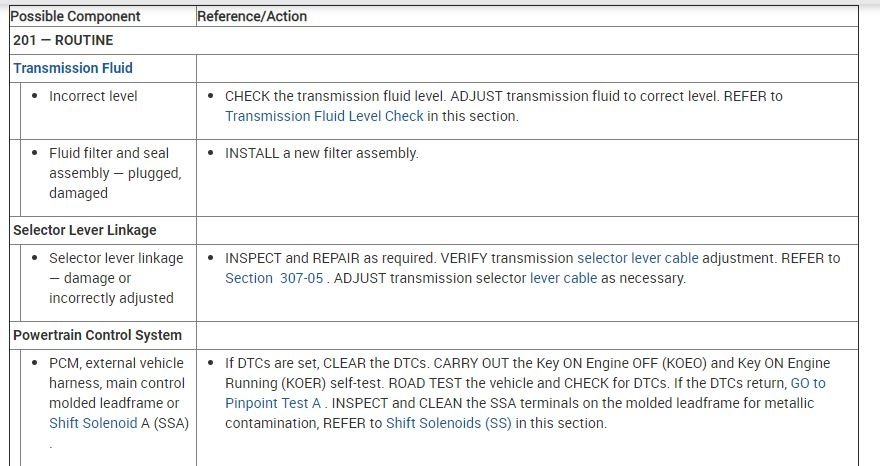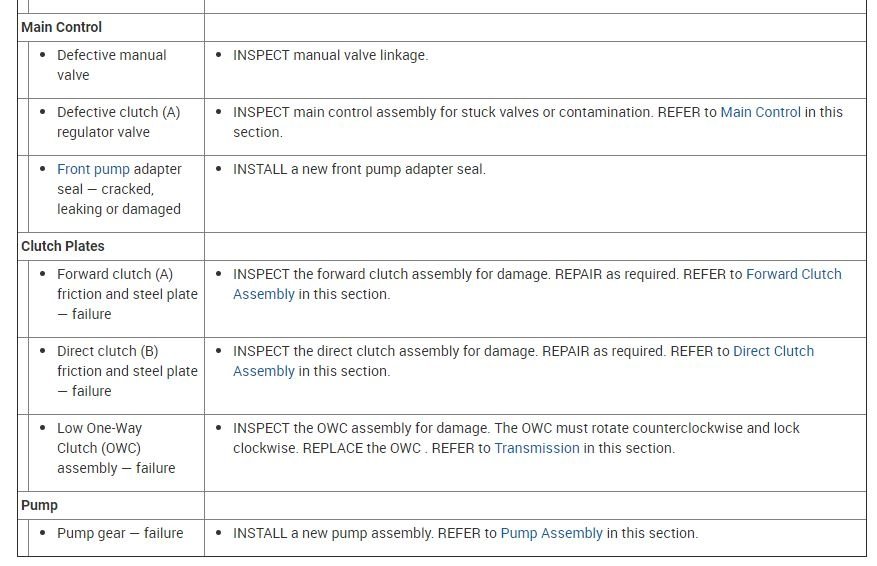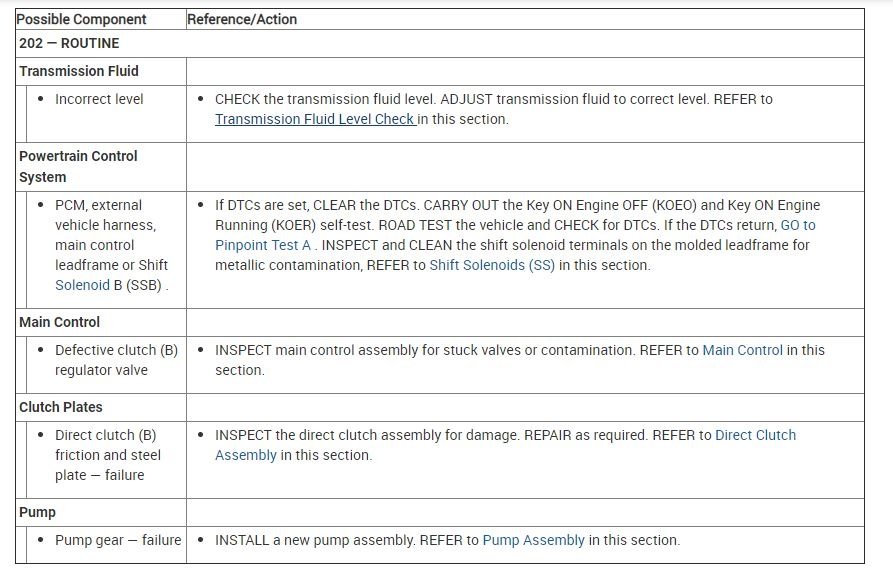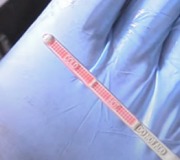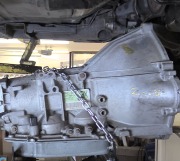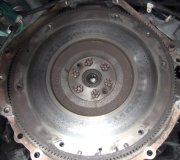You would need to do a mainline pressure test to look for output from the pump. I attached a procedure for you to determine if the front pump has failed.
You will need an advanced scan tool to read and perform this procedure. Otherwise, you would need a shop to check it for you.
Roy
A no-drive condition can exist with correct transmission fluid pressure because of inoperative clutches. Refer to the Clutch Application Chart to determine the appropriate elements. A clutch concern can be located through a series of checks by substituting air pressure for fluid pressure to determine the location of the concern.
Example: When the selector lever is in a forward gear range, a no-drive condition may be caused by an inoperative clutch.
Drain the transmission fluid. Remove the transmission fluid pan.
Remove the transmission fluid filter, seal assembly and mechatronic unit.
Locate the inoperative clutches by applying air pressure into the appropriate clutch port.
Apply air pressure to the appropriate clutch port. A dull thud may be heard or movement felt when a clutch piston is applied. If the clutch seals or check ball are leaking, a hissing sound may be heard.
If the clutches fail to operate during the air check:
the piston seals are not seated, damaged or installed incorrectly.
Plugged feed holes for clutch apply in the case and/or clutch cylinder.
Damaged piston and/or clutch cylinder.
Service as required and recheck.
Front Pump Output Test
The special tests are designed to aid the technician in diagnosing the hydraulic and mechanical portions of the transmission. The front pump output test can also be used to detect a stuck or inoperative main control torque converter regulator valve. The IDS datalogger is used to measure the amount of time it takes the vehicle to reach approximately 5 Km/h (3 MPH) at engine idle speed without pressing the accelerator pedal, verifying transmission pump operation.
Verify transmission fluid temperature is at 77 °C (170 °F) or above.
Park the vehicle for a minimum of 6 hours or overnight on a level spot where it can be driven forward uninhibited for up to 5 Km/h (3 MPH).
Using IDS, with Ignition On and Engine Off, select the following PID s:
VSS Vehicle speed
TRS Transmission Range selector
BOO1 Brake On
APP% Accelerator Pedal Position
Gear_Mode Transmission gear
TFT Transmission Fluid Temperature
TSS_SRC Turbine Speed Sensor
RPM Engine Revolutions
Gear_Rat Transmission Gear ratio
NOTE: Read and review the following steps before performing them as they need to happen consecutively.
Make sure the parking brake is released prior to the next step.
NOTE: Do not apply the accelerator pedal for this test.
Press the record function and perform the following steps.
Press the brake pedal.
Start the engine.
Immediately place the transmission selector lever in the D position.
Immediately release the brake pedal and allow the vehicle to move at idle speed only. Do not accelerate.
After recording for 15 seconds, stop the vehicle.
Using the scroll feature, slide the time bar to the point when the brake was released as indicated by BOO1, and note the time at the bottom.
Move the slide until the VSS shows 5 Km/h (3 MPH), or the maximum speed attained.
Did the vehicle reach 5 Km/h (3 MPH) within 5 seconds?
Yes - vehicle is operating normally. This procedure does not apply.
No - replace the transmission pump assembly. Refer to Pump Assembly.
Front Pump Output Test- Torque Converter Pressure Regulator Valve
Using a diagnostic scan tool, perform a self-test and check for DTCs.
RECORD the RPM and TSS data while raising the engine RPM.
If the TSS stays at 0 RPM the torque converter is malfunctioning.
INSPECT the main control torque converter regulator valve
Tuesday, March 23rd, 2021 AT 9:51 AM
